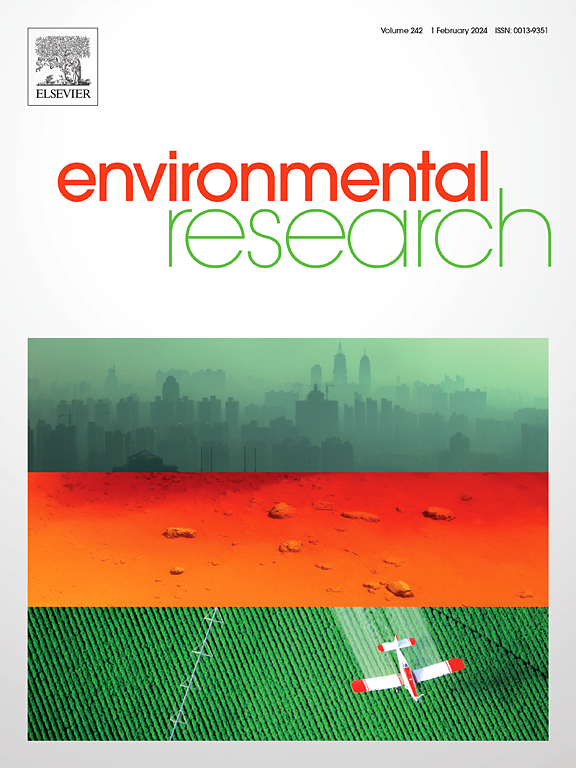来自Getliņi垃圾填埋场的芽孢杆菌和其他细菌的功能能力和塑料降解潜力的评估(拉脱维亚)。
IF 7.7
2区 环境科学与生态学
Q1 ENVIRONMENTAL SCIENCES
引用次数: 0
摘要
由于环境条件的高度可变性,微生物对塑料生物降解的机制仍然知之甚少。本研究旨在分离、鉴定和表征来自Getliņi EKO垃圾填埋场(拉脱维亚里加)的具有塑料降解潜力的细菌。在所选择的细菌中,芽孢杆菌是优势属,而假单胞菌在宏基因组中占主导地位。地衣芽孢杆菌和高原芽孢杆菌培养物的非特异性酯酶活性最高。经过为期6周的批量实验,新开发的细菌群落使未经处理的低密度聚乙烯(LDPE)、聚对苯二甲酸乙二醇酯(PET)和高密度聚乙烯(HDPE)的重量分别减轻了19.44%、5.99%和2.58%。热预处理的PET和酸预处理的HDPE比各自未经处理的形式产生更大的重量损失。扫描电镜主要显示颗粒表面附着的单细胞和微菌落。微生物呼吸和双醋酸荧光素水解试验表明,颗粒对浮游细胞的代谢活性有刺激作用。未经处理的LDPE和PET培养对鸭嘴兽的生态毒性最高,摄食活性分别比对照降低60.39%和71.25%。总之,Getliņi EKO填埋场似乎是一个有希望的细菌采样源,能够生物降解化石基聚合物。进一步完善塑料降解剂的分离和评价方法将为塑料降解微生物资源的潜力提供新的见解。本文章由计算机程序翻译,如有差异,请以英文原文为准。
Evaluation of functional capacity and plastic-degrading potential of Bacillus spp. and other bacteria derived from the Getliņi landfill (Latvia)
The mechanisms of plastic biodegradation by microorganisms remain poorly understood because of high variability in environmental conditions. This study aimed to isolate, identify, and characterise bacteria with plastic-degrading potential derived from the Getliņi EKO landfill (Riga, Latvia). Among the bacteria selected, Bacillus was the predominant genus identified, whereas Pseudomonas dominated the metagenome. Comparative testing revealed the highest non-specific esterase activity in cultures of B. licheniformis and B. altitudinis. Following a 6-week batch experiment, a newly developed bacterial consortium biologically reduced the weight of untreated low-density polyethylene (LDPE), polyethylene terephthalate (PET), and high-density polyethylene (HDPE) by 19.44 %, 5.99 %, and 2.58 %, respectively. Thermally pre-treated PET and acid pre-treated HDPE resulted in greater weight losses than their respective untreated forms. Scanning electron microscopy primarily showed single cells and microcolonies attached to the granule surfaces. Microbial respiration and fluorescein diacetate hydrolysis tests suggested that the granules had a stimulating effect on the metabolic activity of planktonic cells. Cultures with untreated LDPE and PET exhibited the highest ecotoxicity for Thamnocephalus platyurus, reducing ingestion activity by 60.39 % and 71.25 % of the control, respectively. In conclusion, the Getliņi EKO landfill appears to be a promising sampling source for bacteria capable of biodegrading fossil-based polymers. Further refinement of methods for the isolation and evaluation of plastic degraders will provide new insights into the potential of microbial resources for plastic degradation.
求助全文
通过发布文献求助,成功后即可免费获取论文全文。
去求助
来源期刊

Environmental Research
环境科学-公共卫生、环境卫生与职业卫生
CiteScore
12.60
自引率
8.40%
发文量
2480
审稿时长
4.7 months
期刊介绍:
The Environmental Research journal presents a broad range of interdisciplinary research, focused on addressing worldwide environmental concerns and featuring innovative findings. Our publication strives to explore relevant anthropogenic issues across various environmental sectors, showcasing practical applications in real-life settings.
 求助内容:
求助内容: 应助结果提醒方式:
应助结果提醒方式:


